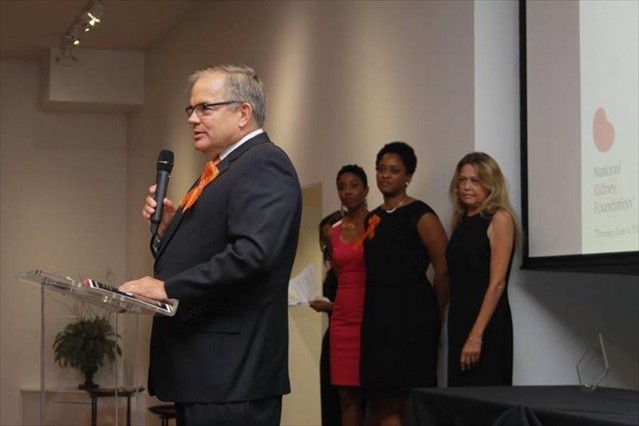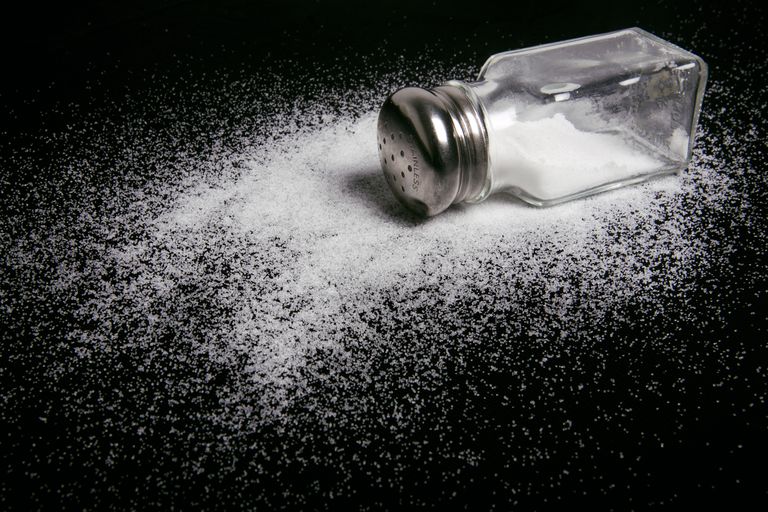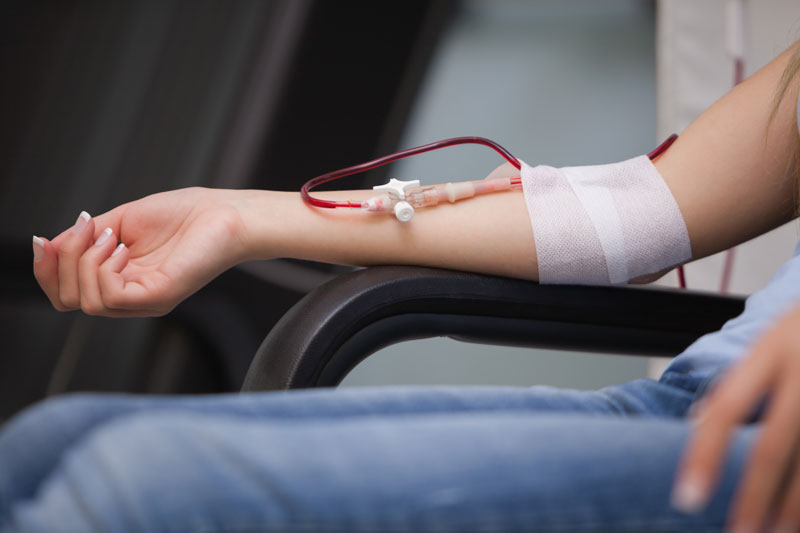
by kidneyassociates | May 4, 2018 | KAKC News
Thank you for your support of the National Kidney Foundation walk – Our team (Kidney Crusaders) raised $3700 for NKF at the walk this year. Lots of our patients and their families joined the walk on UMKC campus.
Our own Yolanda Thomas, DNP, ANP-C was elected as member of the board of the local chapter of National Kidney Foundation
Dr. Walter Bender received the Patrick and Virginia Clune award of Excellence at the NKF Gala

by kidneyassociates | Jul 26, 2014 | KAKC News
Sodium is one of the primary components of table salt. Our bodies require a small amount of sodium on a daily basis but most of us consume a significant amount more than what our bodies need. Excessive sodium intake contributes to high blood pressure which in turn can cause heart attacks, strokes, kidney damage and other medical health problems. Years ago the primary source of sodium was what we added to food at the table via the salt shaker. Today most of the salt is added in the processing or preparation of our daily food as well as in the fast food that many of us consume on a regular basis. Many of us think that if we do not add any salt that we are limiting our sodium effectively but this is often not the case. Certain foods including canned goods and cheese as primary examples contain a significant quantity of sodium which can easily cause us to exceed our daily recommended amount of 2000 mg in just one meal. A simple lunch consisting of soup and a sandwich, for example, can easily exceed 3000 mg of sodium.
Sodium can also contribute to swelling or edema in patients who have other medical problems including congestive heart failure, lung problems or liver problems. The best way to limit your sodium intake is to read the nutrition information pertaining to your food and avoid processed, pre-packaged and fast foods. Be sure that what you eat is consistent with what a serving size is according to the nutrition information. The standard nutrition information usually pertains to a very small serving size, less than what most of us usually consider a standard serving. If we eat twice as much, we need to double the amount of sodium the package says we are taking in the regular serving.
Typically we discourage the use of salt substitutes as they replace sodium with potassium. Too much potassium can be a problem for some patients with kidney problems as well. Salt substitutes still encourage our taste buds to desire or want high sodium foods. By limiting sodium intake some foods which had once been “favorites” can now taste so salty that we can’t eat them. When patients tell me their “old favorite foods” are now too salty I know they are doing what we recommend – limit the sodium intake to 2000 mg per day. This amount of sodium is roughly equivalent to a teaspoon a day, contained within the food we eat. This does not mean to add a teaspoon of table salt per day to the food we eat. We recommend the use of herbs and non-salt containing spices to add “flavor” to food.
Lowering sodium intake is one of the best things a person can do to help with blood pressure, swelling, heart and breathing problems. You can help yourself by being informed and motivated to limit your sodium intake. Learn more at the National Kidney Foundation “Kidney Kitchen” web page http://www.kidney.org/patients/kidneykitchen/index.cfm

by kidneyassociates | Sep 22, 2013 | KAKC News
Blood pressure is measured using two numbers. The top number, or systolic pressure, occurs when the heart contracts during a beat. The second number, or diastolic pressure, occurs while the heart is relaxed between beats. This measures the force pushing out on our vessels by the blood they contain. Blood pressure is written as a fraction such as 120/ 80 mmHg (millimeters of mercury) with systolic pressure on top and diastolic on the bottom. Hypertension, or “high blood pressure,” is when blood pressure increases above 140/90 mmHg. As many as one in three adults have high blood pressure. It has been called the “silent killer” and often causes no symptoms. The best way to know if you have hypertension is to have your blood pressure measured by a health care professional regularly. Hypertension increases the risk for many diseases including heart attacks, heart failure, stroke, peripheral vascular disease, and kidney failure. Hypertension can lead to early death if not treated appropriately. A person’s risk for hypertension can go up with obesity, low physical activity, high salt (sodium) diet, excessive alcohol intake or a family history of high blood pressure.
If you have or think you have hypertension there are many things you can do to help treat it and reduce your risk of life-threatening illness. Lose weight if you are overweight or obese. Exercise most days of the week. Even 30 minutes of walking a day can help. Cut back on the salt (sodium) in your diet. Reduce the amount of alcohol you drink to no more than one or two drinks per day. See your doctor regularly. Take medications you start for high blood pressure regularly. Talk to your doctor if side effects or the cost of your medications are a problem. There are many different types of blood pressure medications and some are less expensive. Do not stop medications suddenly on your own. Getting an automatic blood pressure cuff to use at home can often help you and your doctor adjust the dose or number of medications you take. See see your doctor regularly and talk about any questions you have.

by kidneyassociates | Sep 22, 2013 | KAKC News
By: Timothy K. Neufeld
Hemodialysis is the process whereby blood is cleaned through an artificial kidney. This is done in people who have kidney failure to the point where they are no longer able to have adequate control of metabolic processes. The dialysis access is a critical part of doing hemodialysis treatments. To do adequate hemodialysis it requires that a large volume of blood is continuously sent through the kidney filter. To have this occur, one needs a conduit to have access to the body’s blood supply throughout the course of the hemodialysis treatment.
There are three types of hemodialysis access which are commonly used. The first, and preferred type, is the arteriovenous fistula. This is a surgical connection between an artery and vein, created by a vascular surgeon. This is most commonly placed in the upper arm, and at times, if the vessels are of good enough quality, in the forearm. The fistula provides the preferred access because it is the person’s own artery and vein that are involved, with no placement of any artificial vessel. They tend to have a long duration of lifespan, and very low infection rates. To evaluate adequacy of the vessels, prior to placing the fistula, an ultrasound of the artery and vein is usually done to evaluate size and existing bloodflow. Once placed, a maturation time of 2 to 3 months is usually required for the fistula to be ready for use.
The second choice for hemodialysis access is an arteriovenous graft. This is an artificial tube, placed underneath the skin, with one end attached to the feeding artery, and the other end attached to the outflow vein. This also requires a surgical procedure. It might be placed in the forearm, upper arm, or as a last resort, in the thigh. It’s benefits are that it can be used within 2 to 3 weeks. Grafts tend to have very good blood flow. Because it is an artificial vessel, it has a somewhat higher infection rate than a fistula.
The least preferred access is a tunneled dialysis catheter. This is a double barrel tube, with the indwelling portion placed into one of the large veins in the chest, and the exterior portion brought out through a small hole in the skin. The catheter may be used as a bridge access while waiting for maturation of a fistula or a graft. A catheter can be used immediately after being placed. The problem with the catheter is that it has the highest of all infection rates.
The nephrologist, dialysis nurse, and care coordinator will work as a team to help each individual choose and obtain the best access for their care.





Recent Comments